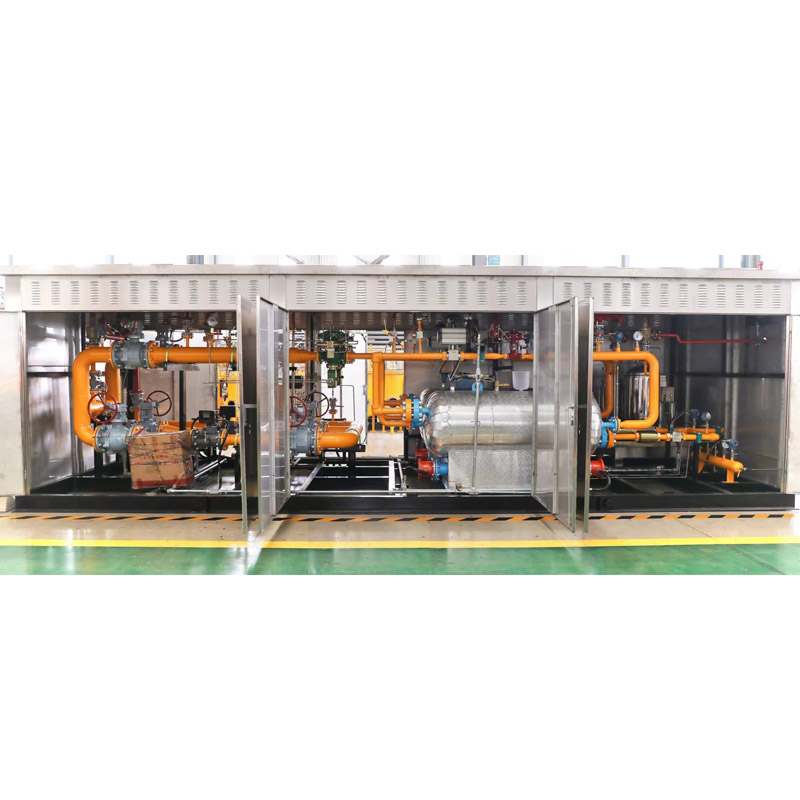
10 月 . 15, 2024 20:59
Back to list
Optimizing Gas Heat Exchanger Efficiency for Enhanced Thermal Performance and Energy Savings
Gas Heat Exchangers An Overview
Heat exchangers are crucial components in many industrial processes, facilitating the transfer of heat between two or more fluids at differing temperatures. Among the various types of heat exchangers, gas heat exchangers play a pivotal role in applications such as power generation, petrochemicals, and HVAC systems. Their efficiency and effectiveness can significantly influence operational costs and energy consumption, making them vital for industrial efficiency and environmental sustainability.
Understanding Gas Heat Exchangers
A gas heat exchanger primarily deals with the transfer of thermal energy between gas streams. Its core function revolves around either heating a gas or cooling it down, depending on the requirements of the system. Typically, gas heat exchangers are utilized in processes involving combustion gases, flue gases, or air, where controlling temperature is essential for efficiency and safety.
The design of a gas heat exchanger generally comprises a series of tubes, plates, or fins that maximize the surface area available for heat transfer. The choice of materials, configuration, and size of the heat exchanger depends on factors such as the types of gases involved, operating temperatures, and pressure conditions.
Types of Gas Heat Exchangers
There are several types of gas heat exchangers, each suited to different applications. The most common include
1. Shell and Tube Heat Exchangers These consist of a series of tubes, with one fluid flowing through the tubes and another fluid (gas or liquid) passing over the tubes. This design offers high heat transfer efficiency and is commonly used in oil refineries and chemical processing.
2. Plate Heat Exchangers These consist of thin plates stacked together, allowing the fluids to flow in alternating channels. Plate heat exchangers are compact and highly efficient, making them ideal for applications where space is limited.
3. Air Cooled Heat Exchangers These utilize ambient air to cool gas streams. They are commonly used in power generation and manufacturing processes, especially in locations where water is scarce.
4. Finned Tube Heat Exchangers These are designed with fins attached to the outside of the tubes, increasing the surface area available for heat transfer. This type is particularly effective in applications with small temperature differences.
gas heat exchanger

Applications
Gas heat exchangers find applications across various industries.
- Power Generation In power plants, gas heat exchangers are used to recover waste heat from exhaust gases, improving overall efficiency. Combined cycle gas turbine (CCGT) systems, for instance, utilize heat exchangers to convert waste heat into additional power.
- Oil and Gas Industry Gas heat exchangers play a critical role in refinery operations, where they help maintain optimal temperatures during distillation and other processes. They are also essential in gas processing, where they heat or cool natural gas.
- HVAC Systems In heating, ventilation, and air conditioning systems, these heat exchangers contribute to energy efficiency by recovering heat from exhaust air and using it to preheat incoming air.
- Environmental Applications Gas heat exchangers are essential in reducing greenhouse gas emissions by optimizing combustion processes and recovering waste heat.
Challenges and Considerations
While gas heat exchangers are integral to many processes, they also present challenges. Fouling can significantly reduce heat transfer efficiency, necessitating regular maintenance and cleaning. Additionally, the design must account for thermal expansion, pressure drops, and variations in gas compositions, which can affect performance.
Incorporating modern technologies and materials can help mitigate these challenges. For example, advanced coatings can reduce fouling, while sensors and automation can optimize performance and monitoring.
Conclusion
Gas heat exchangers play a pivotal role in enhancing energy efficiency across various industrial applications. Their design and operation have a direct impact on energy costs, emissions, and process efficiency. As industries continue to strive for sustainability and cost-effectiveness, the role of gas heat exchangers will undoubtedly grow. Continuous advancements in technology and design will further enhance their performance and applicability, contributing to a more energy-efficient future. Whether in power generation, petrochemicals, or HVAC systems, gas heat exchangers remain essential for optimizing thermal processes and ensuring the efficient use of energy resources.
Latest news
-
Unlocking The Quality Gas Pressure ReducersNewsNov.01,2024
-
The Role of Gas Pressure Reducing StationsNewsNov.01,2024
-
The Importance and Functionality of Safety Relief ValvesNewsNov.01,2024
-
The Essential Role of Safety Valves in Natural Gas ApplicationsNewsNov.01,2024
-
The Essential Role of Gas Pressure RegulatorsNewsNov.01,2024
-
Enhance Your Premium Gas FiltersNewsNov.01,2024

